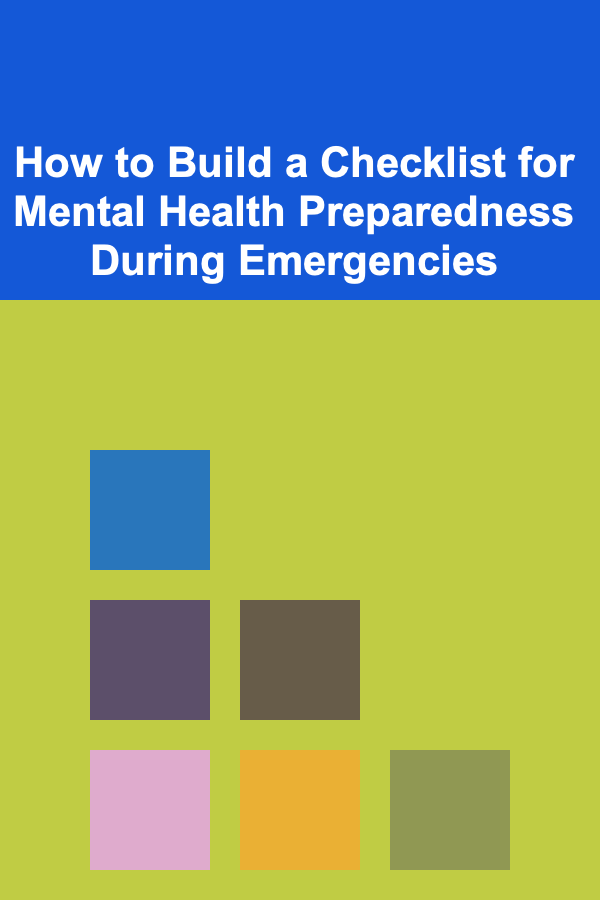
10 Tips for Repaying Medical Debt Strategically
ebook include PDF & Audio bundle (Micro Guide)
$12.99$8.99
Limited Time Offer! Order within the next:

Medical debt can be a significant source of stress, especially in regions where healthcare costs are high and insurance coverage may not fully offset the expenses. Whether it's a result of unexpected emergencies, chronic conditions, or procedures not covered by insurance, medical debt can accumulate quickly. However, with the right approach, it is possible to manage and eventually eliminate this debt.
In this article, we will explore 10 tips for repaying medical debt strategically, enabling you to regain control of your finances and reduce the financial burden that comes with medical expenses.
Review Your Medical Bills Carefully
Before diving into any repayment plan, the first step is to ensure the accuracy of your medical bills. Mistakes are common in healthcare billing, and you may be charged for services you didn't receive or overcharged for certain procedures. To prevent paying more than necessary, take the following steps:
- Check for Errors: Look for duplicate charges, services that weren't provided, or incorrect billing codes. Even minor mistakes can add up.
- Ask for an Itemized Bill: Request an itemized bill if you haven't received one. This will allow you to see the detailed breakdown of charges and make it easier to spot discrepancies.
- Verify Insurance Coverage: Ensure that your insurance coverage is applied correctly. If something is missing, contact your provider immediately to rectify it.
Tip:
If you find discrepancies, challenge the bill directly with the healthcare provider or the insurance company. They may be willing to adjust or remove charges that shouldn't have been billed.
Contact the Healthcare Provider
Once you've reviewed your medical bills and ensured their accuracy, it's time to communicate directly with the healthcare provider or hospital. Many healthcare institutions are willing to work with patients to resolve outstanding medical debt, especially if you demonstrate a willingness to pay, but need more manageable terms.
- Negotiate for Discounts: Ask if they offer any discounts for paying upfront or in full. Some providers offer reduced rates if you can pay a lump sum.
- Request a Payment Plan: Most hospitals and healthcare providers have payment plans available for patients who are unable to pay the full amount at once. Negotiate for a manageable monthly payment.
- Ask for Financial Assistance: Some healthcare providers have financial assistance programs based on income or financial hardship. If you qualify, this could significantly reduce the amount you owe.
Tip:
Make sure to get any agreements in writing. This can help protect you in case of future disputes or misunderstandings.
Understand Your Insurance Benefits
A thorough understanding of your insurance policy is essential when dealing with medical debt. Insurance coverage can be complex, and many individuals may not realize that certain costs are partially or fully covered.
- Know Your Coverage Limits: Familiarize yourself with your policy's coverage limits, deductibles, copayments, and out-of-pocket maximums.
- Appeal Denied Claims: If a claim is denied, review the reasoning and appeal the decision if necessary. Insurance companies often make mistakes, and you may be able to get some or all of the costs covered.
- Pre-Authorization: If you need a specific treatment or procedure, make sure to get pre-authorization from your insurance provider. This can prevent surprise bills after the service is provided.
Tip:
Keep copies of all communications with your insurance provider. If there is any ambiguity or confusion later, you'll have documentation to reference.
Consolidate Your Medical Debt
If you have medical debt from multiple providers, consolidating the debt may be an effective strategy. This can simplify your finances by combining multiple bills into a single loan or payment plan. Several options for consolidation include:
- Personal Loans: A personal loan from a bank, credit union, or online lender can consolidate your medical debt into one monthly payment, often with a lower interest rate.
- Medical Debt Consolidation Services: Some companies specialize in consolidating medical debt. These companies may offer to negotiate on your behalf or provide loans to cover the debt.
- Credit Cards: If you have a credit card with a 0% APR promotional offer, you can transfer the medical debt to the credit card. Be cautious of the interest rates after the promotional period ends.
Tip:
Before consolidating, ensure that the new debt structure is more affordable and provides a clear repayment plan. Be mindful of fees and interest rates.
Set Up a Budget
Creating a budget is essential when tackling any form of debt, including medical bills. Having a clear financial plan will help you allocate enough funds to pay off your medical debt without neglecting other financial obligations. Here's how you can structure your budget:
- Track Your Income and Expenses: Understand your monthly income and your necessary expenses, such as rent, utilities, groceries, and transportation.
- Prioritize Medical Debt Payments: Allocate a certain percentage of your income to medical debt. If you're on a tight budget, consider reducing discretionary expenses like dining out or entertainment to free up more money.
- Emergency Fund: Set aside a small amount for emergencies so that you're not caught in a difficult situation if something unexpected arises.
Tip:
Use budgeting tools or apps to track your spending and ensure you stay on top of your payments.
Explore Health Savings Accounts (HSAs)
If you are employed and have access to a Health Savings Account (HSA), using this account can help you pay off your medical debt more effectively. HSAs are tax-advantaged accounts designed to help cover medical expenses, and they can be particularly useful for individuals with high-deductible health plans.
- Contribute Regularly: If you're eligible, make regular contributions to your HSA. The funds can be used for future medical expenses, including outstanding debt.
- Use HSA Funds for Past Medical Bills: You can use your HSA to pay for medical bills that have already been incurred. This can help reduce your overall debt load.
Tip:
If you don't have an HSA, consider setting one up if it's available to you. Many employers offer this benefit, and it can be a powerful tool in managing medical costs.
Look for Government Assistance Programs
Various government programs may assist in repaying medical debt, especially if you meet certain income qualifications. Programs and options vary by location and the specific situation, but they may include:
- Medicaid: If your income is low enough, you may qualify for Medicaid, which can reduce or eliminate medical bills for services provided.
- State Assistance Programs: Some states offer assistance programs to help low-income residents pay for medical expenses. Check with your state's health department to see if such programs are available in your area.
- Nonprofit Organizations: Many nonprofit organizations provide financial assistance for medical bills, particularly for those with specific conditions or illnesses.
Tip:
Research eligibility requirements for government and nonprofit programs early. Applications for assistance can sometimes take time, so it's best to start early.
Consider Debt Settlement or Bankruptcy
For individuals with substantial medical debt that seems insurmountable, debt settlement or bankruptcy may be a last-resort option. While both options have serious consequences, they can provide relief from overwhelming debt.
- Debt Settlement: Debt settlement involves negotiating with creditors to pay a lump sum that is less than the full amount owed. This can be an option if you have a significant amount of debt and are unable to pay the full balance.
- Chapter 7 or Chapter 13 Bankruptcy: If medical debt is the primary source of your financial struggles, bankruptcy may be an option. Chapter 7 bankruptcy can discharge medical debt entirely, while Chapter 13 involves a repayment plan that may reduce the total amount owed.
Tip:
Consult with a financial advisor or bankruptcy attorney before pursuing debt settlement or bankruptcy. These decisions can have long-term effects on your credit and financial future.
Increase Your Income
Finding ways to increase your income can accelerate the process of paying off medical debt. Consider the following strategies to boost your earnings:
- Freelancing: If you have skills that can be marketed, such as writing, graphic design, or web development, freelancing can provide additional income.
- Part-Time Job: Taking on a part-time job, even temporarily, can provide extra cash to put toward your medical bills.
- Selling Unused Items: If you have items you no longer need, consider selling them online or at a yard sale to raise money for medical debt repayment.
Tip:
Use any extra income exclusively for paying off your medical debt to make the most significant impact on your balance.
Stay Persistent and Positive
Repaying medical debt can be a long and challenging process, but staying persistent and positive will help you get through it. Here are a few ways to stay motivated:
- Celebrate Milestones: Celebrate small victories along the way, such as paying off a portion of the debt or reaching a repayment goal.
- Stay Focused on Your Goal: Keep your end goal in mind---financial freedom and a life without medical debt. This vision can help you stay motivated when things get tough.
- Seek Support: Talking to family members, friends, or financial counselors can provide emotional support and practical advice for managing your debt.
Tip:
Remember that paying off medical debt is a marathon, not a sprint. Stay committed, and over time, you will achieve your goal of being debt-free.
Conclusion
Repaying medical debt requires a strategic and disciplined approach. By reviewing your bills carefully, negotiating with healthcare providers, exploring insurance benefits, and creating a realistic repayment plan, you can work toward eliminating your medical debt. If necessary, don't hesitate to explore options like debt consolidation, government assistance, or even bankruptcy. Through persistence and careful planning, you can regain control of your finances and free yourself from the burden of medical debt.
Reading More From Our Other Websites
- [Personal Finance Management 101] How to Build Credit from Scratch if You're Starting Late
- [Home Family Activity 101] How to Spark Joy and Laughter: Planning an Unforgettable Family "Talent Show" at Home
- [Survival Kit 101] How to Pack the Ultimate Survival Kit for Any Crisis
- [Personal Care Tips 101] How to Use Lip Balm to Prevent Lip Peeling
- [Home Rental Property 101] How to Market Your Rental Property During Off-Season
- [Organization Tip 101] How to Organize Your Bathroom Cabinet on a Budget
- [Organization Tip 101] The Best DIY Tile Removal Tools for Your Home Renovation
- [Home Pet Care 101] How to Administer Pet First Aid for Cuts and Scrapes Safely at Home
- [Home Security 101] How to Choose the Best Home Security System for Apartments
- [Personal Investment 101] Maximizing Your Earnings with Passive Income from Deep Learning

How to Build a Checklist for Mental Health Preparedness During Emergencies
Read More
How To Identify Marine Amphibians
Read More
How to Organize Your Study Room for Different Learning Styles
Read More
How to Soundproof Windows Without Replacing Them
Read More
Mastering Puff Pastry from Scratch: A Comprehensive Guide
Read MoreHow to Audit Your Business Expense Tracker for Accuracy
Read MoreOther Products

How to Build a Checklist for Mental Health Preparedness During Emergencies
Read More
How To Identify Marine Amphibians
Read More
How to Organize Your Study Room for Different Learning Styles
Read More
How to Soundproof Windows Without Replacing Them
Read More